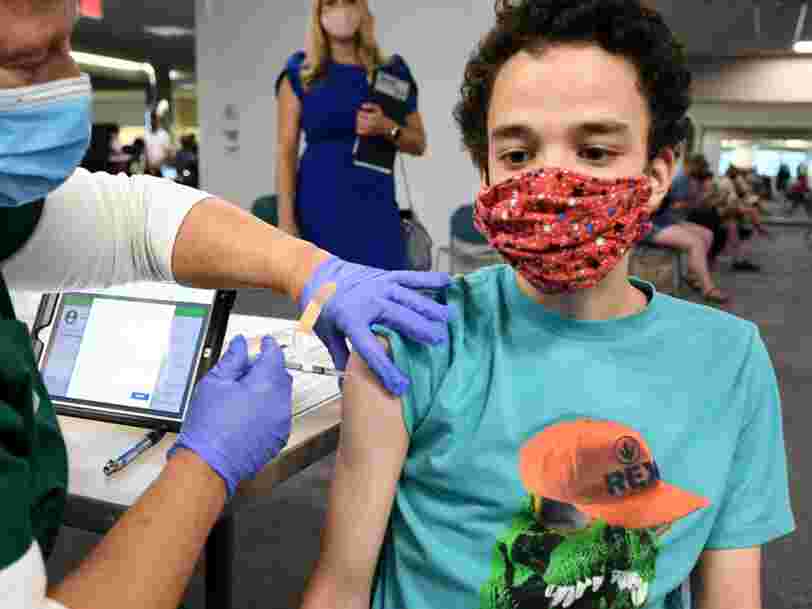Vaccines may get authorized for young kids in October. Here are the drug companies' most likely timelines.
Aria Bendix | Publié le | Mis à jour le
- Coronavirus vaccines won't be available for children under 12 until after school starts.
- Pfizer expects to know how its vaccine performs among kids ages 5 to 11 by the end of September.
- Moderna could seek FDA authorization in the winter or early next year.
- See more stories on Insider's business page .
It's one of the US's biggest hurdles to getting the population vaccinated: Children under 12 - nearly 15% of the country, or around 48 million Americans - aren't yet eligible to receive coronavirus shots.
Both Pfizer and Moderna entered young kids into their clinical trials in March, but the results of those studies haven't been published yet.
Pfizer expects to have data about its vaccine's efficacy among kids ages 5 to 11 by the end of September. It usually takes the Food and Drug Administration a few weeks to review such data, so that would put the US on track to start administering shots to young kids in October at the earliest, assuming the trial results are good.
Data for the other age group Pfizer is studying, children ages six months to 5 years, could be available shortly thereafter, Pfizer said last month. The company previously estimated that results for its youngest age group could be available by October or November.
Moderna, meanwhile, expects to seek emergency authorization for children under 12 in the winter or early next year.
The FDA hasn't yet authorized Moderna's and J&J's shots for older kids
The FDA asked both Pfizer and Moderna to expand their under-12 trials last month, citing concerns that the studies weren't large enough to detect rare side effects like heart inflammation.
Until then, Pfizer had been studying its vaccine in up to 4,500 young children, divided among two age groups: 5-11 years and six months to 5 years. Moderna's trial, meanwhile, included three age groups - 6-11, 2-5, and six months to less than 2 years - each with 2,265 participants. The FDA asked both companies to include at least 3,000 children in the 5-to-11 age group, The New York Times reported.
The FDA authorized Pfizer's shot for children ages 12 to 15 in May. Moderna, however, is still waiting on the agency to authorize its shot for children ages 12 to 17, after seeking emergency authorization in June. The FDA could greenlight that shot for this age group any day now.
Johnson & Johnson is on a slower timeline. The company won't start studying its vaccine among 12- to 17-year-olds until this fall. If the shot is shown to be safe and effective among older kids, J&J could then start enrolling 2- to 11-year olds, followed by children younger than 2.
That means a single-dose shot likely won't be available to kids until at least 2022.
Young children will likely receive a lower dose
Pfizer's phase-one trial indicated that a lower dose of its vaccine - 10 micrograms, as opposed to the 30 micrograms given to adults - is safe among children ages 5 t0 11. The trial administered an even smaller dosage, 3 micrograms, to children ages 6 months to 5 years, who also seemed to tolerate it well.
Moderna is similarly comparing its standard dosing regimen (100 micrograms) with lower doses for all age groups. Children ages 2 to 12 in the trial are receiving either 50 or 100 micrograms, and kids between six months and 2 years are receiving either 25, 50, or 100 micrograms.
A lower dose could help avoid unnecessary side effects: Adolescents in Pfizer's trials seemed to develop side effects more frequently than adults did , likely because kids' immune systems rev up quickly. Even the most common side effects, like fatigue and headaches, were relatively minor, though.
Via PakApNews